Key takeaways:
- Positive reinforcement and adaptability enhance student engagement and classroom dynamics.
- Fostering a sense of community through collaboration and clear routines significantly improves the learning environment.
- Building relationships through active listening and humor creates a safe space for student expression.
- Celebrating achievements and setting clear expectations fosters ownership and motivation in students.
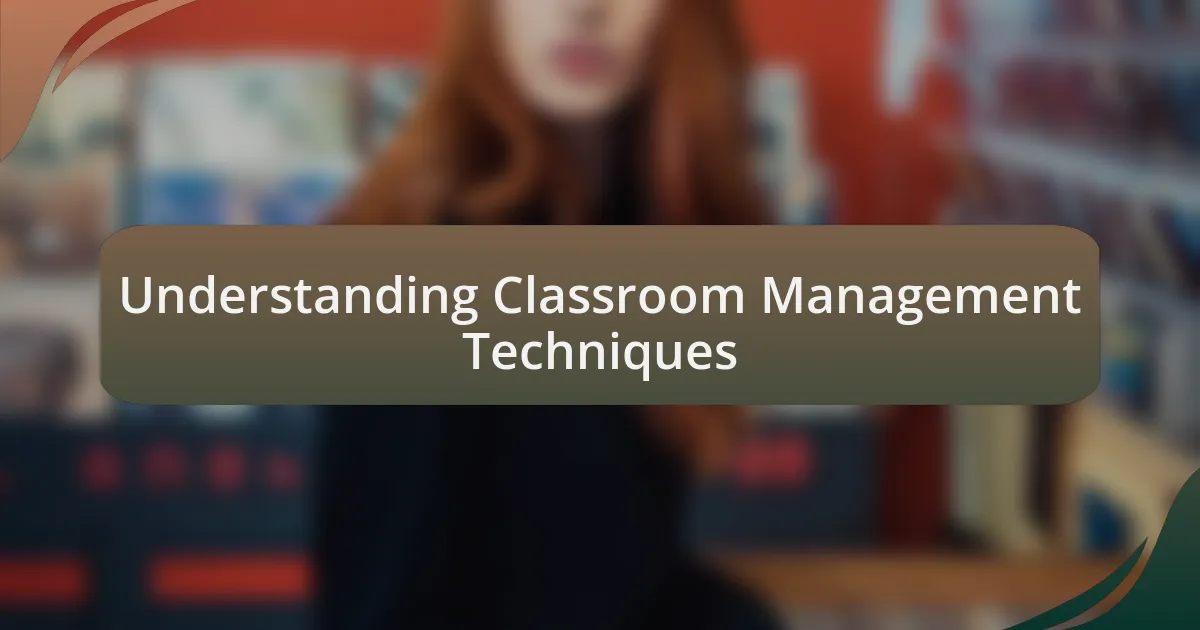
Understanding Classroom Management Techniques
Classroom management techniques are essential for creating a focused and productive learning environment. I remember my first experience in a classroom where chaos seemed to reign; the lack of structure made it nearly impossible for anyone to learn. It was a turning point for me, highlighting how crucial it is to establish clear expectations and routines.
One effective technique I’ve found is the use of positive reinforcement. When I implemented a reward system for good behavior in my music classes, I noticed a significant shift in student engagement. It made me wonder: how can something as simple as acknowledging positive actions truly transform a classroom dynamic?
Another key aspect is adaptability. In one lesson, I had planned an intricate activity, only to realize that the students weren’t quite ready for it. Instead of sticking rigidly to my plan, I adjusted on the fly, opting for a simpler, more relatable approach. This flexibility not only salvaged the lesson but also reinforced the idea that understanding my students’ needs is at the heart of effective classroom management.
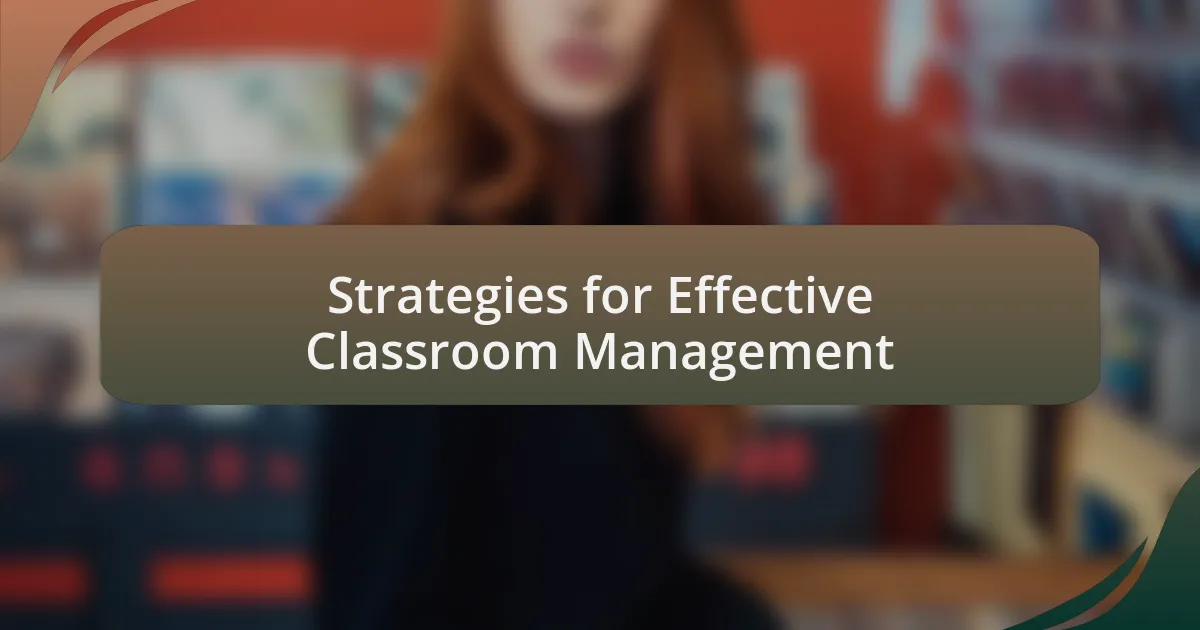
Strategies for Effective Classroom Management
One strategy that has consistently worked for me is fostering a sense of community within the classroom. During my early teaching days, I often noticed students isolating themselves, particularly during group work. To combat this, I began incorporating ice breaker activities that encouraged collaboration and communication, which not only broke down barriers but also transformed the classroom atmosphere into one of support and camaraderie. How uplifting it is to witness students building friendships while sharing their love for music!
Establishing clear routines has also proven vital in my experience. I once started each class with a brief, consistent warm-up exercise, which served as both a physical and mental transition. This routine created a calming, familiar structure that students could rely on, allowing us to dive into the lessons smoothly. Isn’t it fascinating how something as simple as a consistent start can set the tone for an entire session?
Lastly, I’ve learned the power of setting individual goals. By encouraging my students to set personal objectives, particularly in performance or technique, I’ve seen a notable increase in their motivation and accountability. One student, who struggled with confidence, gradually gained self-assurance by tracking her progress. This leads me to ponder: how can we truly empower our students if we don’t give them ownership over their learning journey?
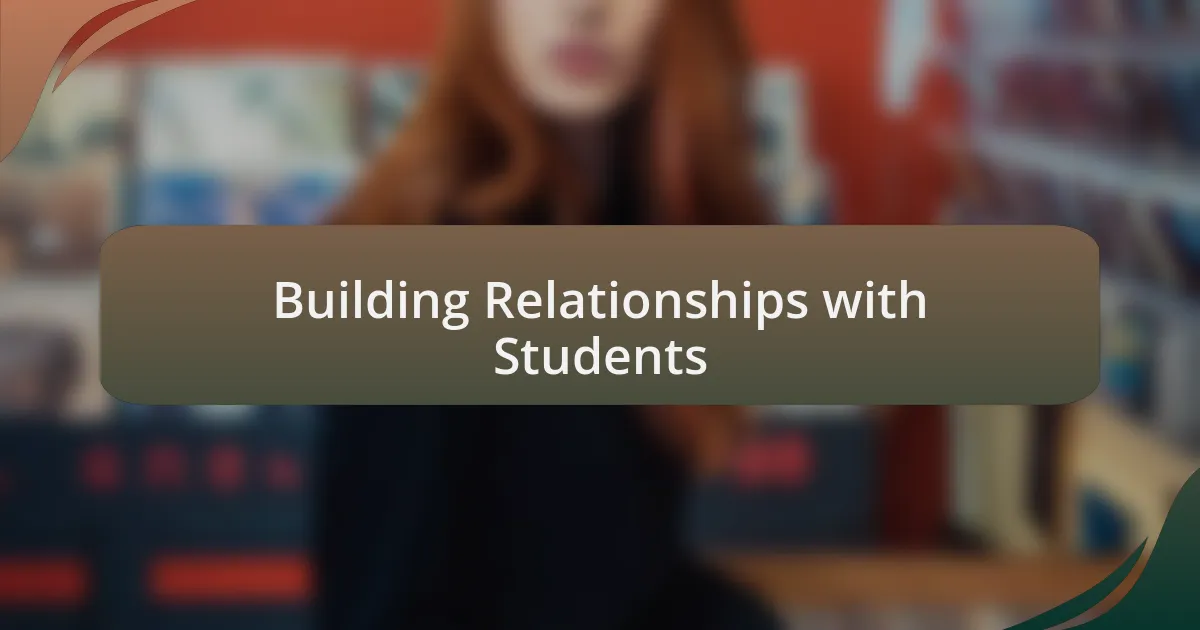
Building Relationships with Students
Building relationships with students is integral to creating an engaging learning environment. I recall a pivotal moment when I took the time to learn about my students’ musical interests outside of class. By genuinely showing interest in their favorite artists and genres, I crafted lessons that resonated with them personally, making them feel valued and understood. Doesn’t it feel rewarding when students realize you care about them as individuals, not just as learners?
I also find that humor plays a significant role in building rapport. In one memorable class, I used a light-hearted music pun to break the ice when tensions ran high before a performance. The laughter that followed brought us closer, creating an atmosphere where students felt safe to express themselves. Have you noticed how laughter can dissolve barriers and foster a sense of belonging?
Lastly, I’ve learned the immense impact of active listening. During a particularly challenging group project, I made it a point to listen attentively to a student who voiced her frustrations. Acknowledging her feelings not only strengthened our bond but also led to a collaborative solution that improved the entire group dynamic. This experience underscored the importance of validating student voices—after all, when students feel heard, they are more likely to engage wholeheartedly in the learning process.
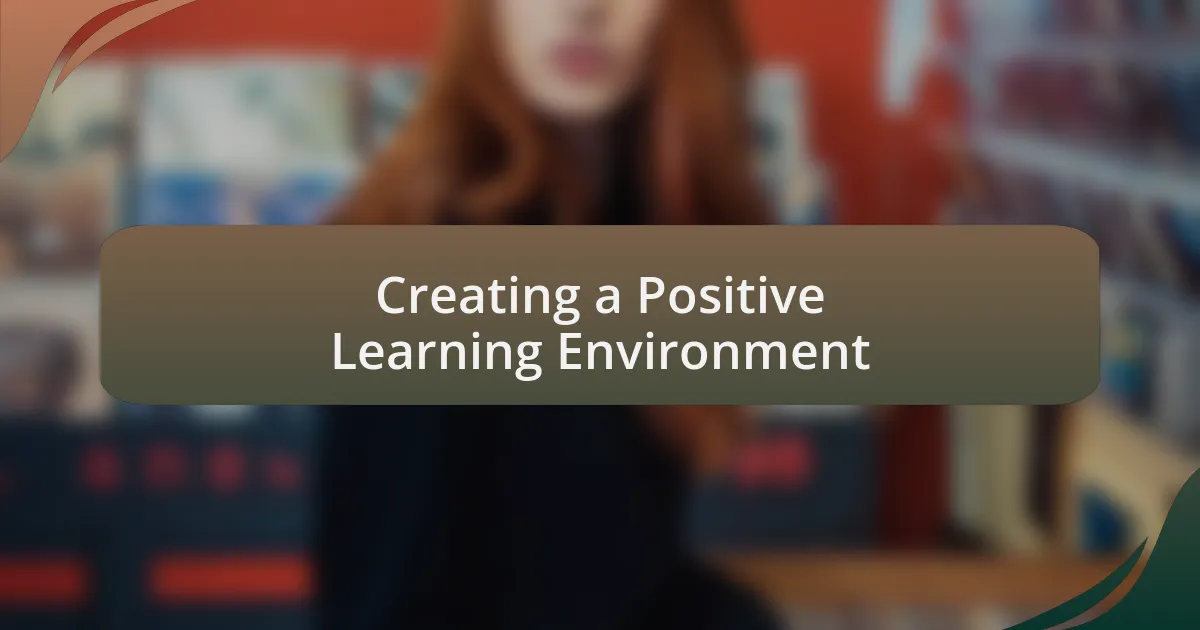
Creating a Positive Learning Environment
Creating a positive learning environment starts with setting the right tone in the classroom. I remember a time when I rearranged the seating in my classroom to foster collaboration rather than competition. By placing students in small groups with comfortable seating, I noticed an immediate shift in their engagement. It felt empowering to see them work together, exchanging ideas and spark creative discussions. Have you ever felt that energy when students work hand in hand?
Another vital aspect is the incorporation of clear expectations and guidelines. In one class, I established simple rules framed positively, such as “be respectful” and “embrace creativity.” I involved my students in discussing what these rules looked like in practice. This not only made them more invested in adhering to them but also cultivated a sense of ownership over the learning space. Can you recall a time when you felt an unspoken agreement in a group that made everyone more at ease?
Lastly, I emphasize the power of celebrating achievements, both big and small. At the end of each week, I would hold a short reflection session where students could share their successes, whether it was mastering a difficult piece or simply trying something new. I could see their faces light up with pride, and it made the classroom feel like a supportive community. Don’t you believe it’s crucial to recognize that every step forward is worth celebrating?
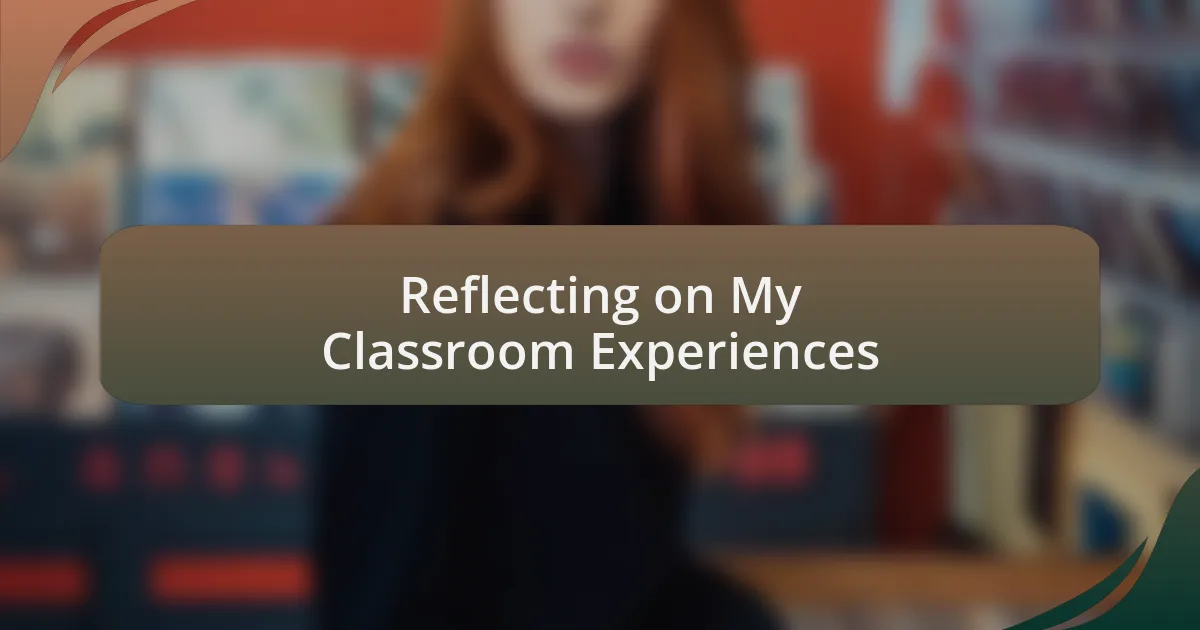
Reflecting on My Classroom Experiences
Reflecting on my classroom experiences has offered me profound insights into effective management techniques. There was a moment when I introduced a classroom project that combined music and technology. Watching my students dive deep into their creativity, forming teams based on their interests, reminded me of how powerful it is to blend passion with learning. Have you ever seen that spark in a student when they feel free to express themselves?
One particular experience stands out: during a difficult week, I noticed a few students struggling with motivation. So, I organized informal jam sessions, allowing them to connect through music rather than traditional methods. This shift not only rejuvenated their enthusiasm but also created a safe space for vulnerability. I still think about the cathartic power of music and how it can heal and inspire—what does it mean to you when students find solace in creative expression?
As I look back, I realize the importance of adaptability in classroom management. There were times when my plans unraveled, and I had to pivot quickly. One instance was when I had to scrap a planned lesson because the students were captivated by a spontaneous discussion about their favorite songs. Rather than resist, I embraced the moment, guiding them to explore music’s cultural impacts. This adaptability not only fostered a more engaging learning environment but also taught me the value of listening to my students’ needs. How often do we allow flexibility to lead the way in our teaching journeys?